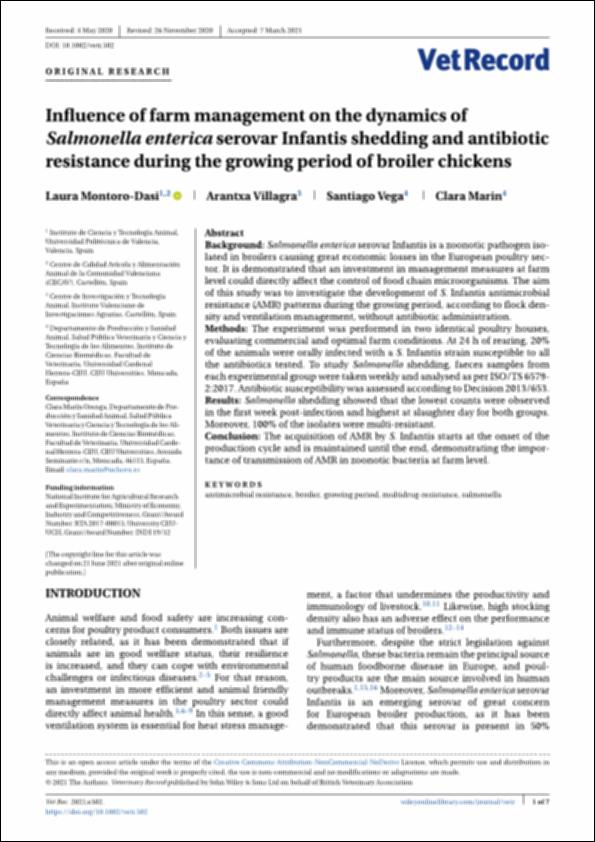Por favor, use este identificador para citar o enlazar este ítem:
http://hdl.handle.net/10637/13465Influence of farm management on the dynamics of "Salmonella enterica" serovar Infantis shedding and antibiotic resistance during the growing period of broiler chickens
| Título : | Influence of farm management on the dynamics of "Salmonella enterica" serovar Infantis shedding and antibiotic resistance during the growing period of broiler chickens |
| Autor : | Montoro Dasí, Laura Villagrá García, Aránzazu Vega García, Santiago Marín Orenga, Clara |
| Materias: | Salmonella enterica - Resistencia a los medicamentos.; Drug resistance in Salmonella enterica.; Gallinas - Cría y explotación.; Poultry - Communicable diseases.; Granjas avícolas - Gestión.; Poultry hatcheries - Management.; Aves de corral - Enfermedades infecciosas.; Hens - Breeding. |
| Editorial : | John Wiley & Sons British Veterinary Association |
| Citación : | Montoro-Dasi, L., Villagra, A., Vega, S. & Marin, C. (2021). Influence of farm management on the dynamics of Salmonella enterica serovar Infantis shedding and antibiotic resistance during the growing period of broiler chickens. Veterinary Record, vol. 188, i. 10 (22-29 may.), art. e302. DOI: https://doi.org/10.1002/vetr.302 |
| Resumen : | Background: Salmonella enterica serovar Infantis is a zoonotic pathogen isolated in broilers causing great economic losses in the European poultry sector. It is demonstrated that an investment in management measures at farm level could directly affect the control of food chain microorganisms. The aim of this study was to investigate the development of S. Infantis antimicrobial resistance (AMR) patterns during the growing period, according to flock density and ventilationmanagement, without antibiotic administration. Methods: The experiment was performed in two identical poultry houses, evaluating commercial and optimal farm conditions. At 24 h of rearing, 20% of the animals were orally infected with a S. Infantis strain susceptible to all the antibiotics tested. To study Salmonella shedding, faeces samples from each experimental groupwere takenweekly and analysed as per ISO/TS 6579- 2:2017. Antibiotic susceptibilitywas assessed according toDecision 2013/653. Results: Salmonella shedding showed that the lowest counts were observed in the first week post-infection and highest at slaughter day for both groups. Moreover, 100% of the isolates were multi-resistant. Conclusion: The acquisition of AMR by S. Infantis starts at the onset of the production cycle and is maintained until the end, demonstrating the importance of transmission of AMR in zoonotic bacteria at farmlevel. |
| Descripción : | Este artículo se encuentra disponible en la siguiente URL: https://bvajournals.onlinelibrary.wiley.com/doi/epdf/10.1002/vetr.302 |
| URI : | http://hdl.handle.net/10637/13465 |
| Derechos: | http://creativecommons.org/licenses/by-nc-nd/4.0/deed.es |
| ISSN : | 0042-4900 2042-7670 (Electrónico) |
| Fecha de publicación : | 22-may-2021 |
| Centro : | Universidad Cardenal Herrera-CEU |
| Aparece en las colecciones: | Dpto. Producción y Sanidad Animal, Salud Pública Veterinaria y Ciencia y Tecnología de los Alimentos |
Los ítems de DSpace están protegidos por copyright, con todos los derechos reservados, a menos que se indique lo contrario.


